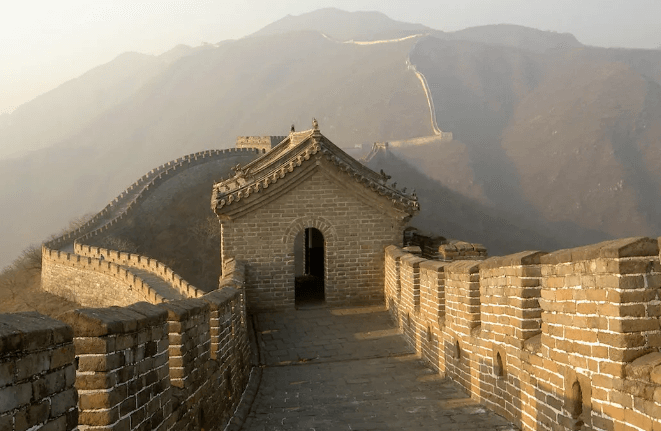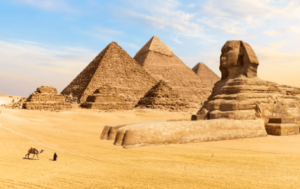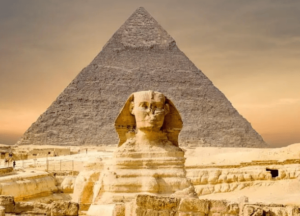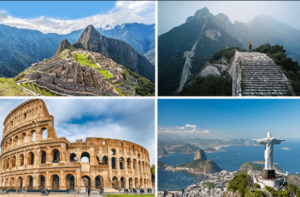The first Seven Wonders of the Ancient World list was created over 2,000 years ago by an adventurous Greek traveller who admired some of the World’s most amazing artificial structures.
Since then, most of the original list has been destroyed, except the Great Pyramid of Giza. In 2001, Swiss-born Canadian filmmaker Bernard Weber founded the New Seven Wonders of the World and asked the public to vote to find a new 7 Wonders of the World for the modern era. Completing the final cut after months of reflection, discussion, and a short list is impressive.
List of New Seven Wonders of the World
1. The Great Wall of China
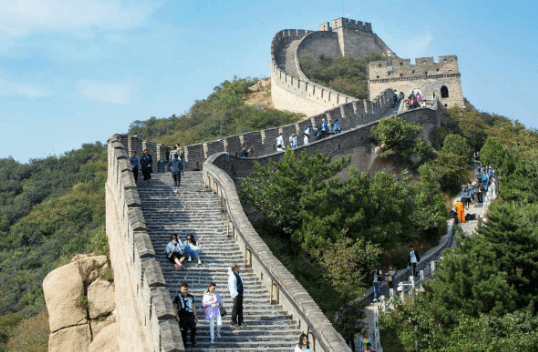
To say it’s incredible might be an understatement. The Great Wall of China is one of the World’s newest Seven Wonders with the most significant architectural construction projects, and is widely known to be approximately 8,850 kilometres long. However, a controversial Chinese study claims it is 13,170 miles (21,200 km) long. Work began in the 7th century BC and continued for 2,000 years. Although referred to as a “wall,” the structure features two long, parallel walls.
Additionally, a watchtower and barracks are located on the bastion. But one of the not-wallet things about the wall was its efficiency. Although built to deter invasions and raids, walls often failed to provide absolute security. Instead, scholars have pointed out that it served more as “political propaganda.”
2. Petra, Jordan
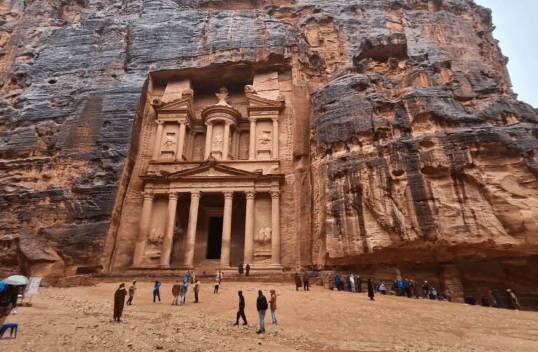
Jordan’s ancient city of Petra is located in a remote valley between sandstone mountains and cliffs. This is known as one of the places where Moses struck the rock, and water came out. Later, the Arab tribe of the Nabataeans made it their capital. During this period, it prospered, becoming an important trading centre, famous Nabataeansaeans, famous Nabataeansr dwellings, temples, and tombs into sandstone, which changed colour with the changing sun.
Additionally, they built lush gardens and water systems that made agriculture possible. Petra’s population at its peak is said to have been around 30,000. However, as trade routes changed, the city began to decline.
A major earthquake in 363 caused further difficulties, and after another earthquake in 551, Petra was gradually abandoned. Although archaeologists largely ignored it in the late 20th century, many questions remain about the city.
3. Machu Picchu
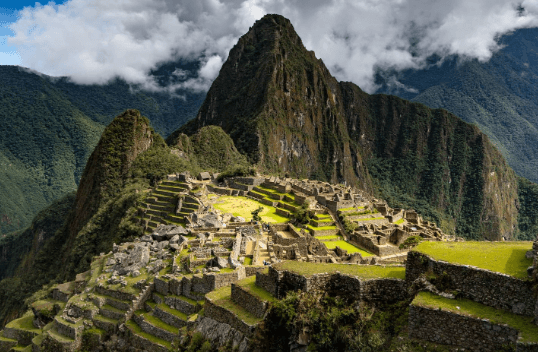
This Inca site near Cusco, Peru, was “discovered” by Hiram Bingham in 1911. He believed it to be Vilcabamba, a secret Inca fortress used during the 16th-century revolt against Spanish rule. Although the claim was later disproven, the purpose of Machu Picchu has confused scholars.
Bingham believed it was the home of the Virgins of the Sun, women who lived in convents vowing chastity. Others think it may have been a pilgrimage site, while others believe it was a royal rethink that shouldn’t be there is a place to advertise beer.
In 2000, a crane used for such advertising fell and cracked the monument.) What is known is that Machu Picchu is one of the few significant pre-Columbian ruins. It was found almost intact. Despite its relative isolation due to its location in the Andes, it is characterized by agricultural terraces, p, plazas, residential areas, and temples.
4. Chichen Itza
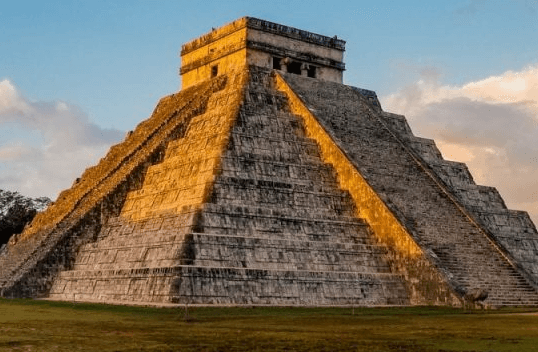
A Toltec-style pyramid rises 24 meters above the square of Chichen Itza, Yucatan, Mexico. The pyramids were built after invaders conquered the ancient Mayan city in the 10th century. Chichen Itza is a Mayan city on Meis o’s Yucatan Peninsula that flourished in the 9th and 10th centuries.
Numerous vital monuments and temples were built under the rule of the Itzá, a Mayan tribe with strong Toltec influence.
Among the most notable is the stepped pyramid El Castillo (“the Castle”), which rises 24 meters above the main square. A testament to the astronomical abilities of the Mayans, the structure features a total of 365 steps, equal to the number of days in a solar year.
During the spring and autumn equinoxes, the setting sun casts a shadow over the pyramid, creating the appearance of a snake slithering down the northern steps. There is a stone snake head on the floor. But life there was not all work and science.
Chichén Itzá is home to the largest tlachitli (a type of sports stadium) in the Americas. On the grounds, residents played ceremonial ball games that were popular throughout pre-Columbian Mesoamerica.
5. Christ the Redeemer
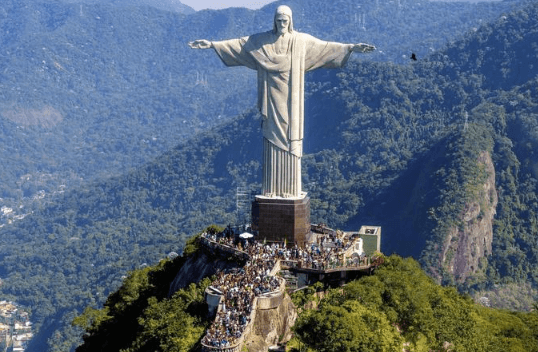
A giant statue of Christ, Christ the Redeemer, stands atop Rio de Janeiro’s Corcovado Mountain. Its origins date back to immediately after World War I. At the time, some Brazilians feared a “wave of distrust.” They ultimately proposed a statue designed by Heitor da Silva Costa, Carlos Oswald, and Paul Landowski.
Construction began in 1926 and was completed five years later. The resulting monument is 30 meters high, excluding the base, which is approximately 8 meters high, and its outstretched arms are 28 meters long. It is the World’s best Art Deco sculpture.
Christ the Redeemer is reinforced concrete and covered with approximately 6 million tiles. S somewhat disconcertingly, the statue is often struck by lightning, and in 2014, a storm was of Inesus’ right thumb.
6. The Colosseum in Rome
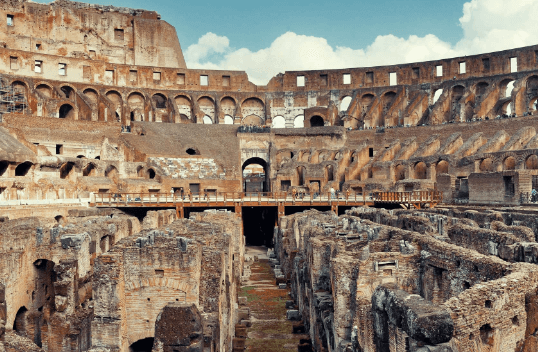
The Colosseum in Rome was built in the 1st century by order of Emperor Vespasian. An engineering feat, the amphitheatre measures 620 by 513 feet (189 by 156 meters) and features a complex vaulting system. It could accommodate 50,000 spectators who watched various events.
Perhaps the most notable were gladiatorial fights, but men fighting with animals were also ordinary. Water was also sometimes pumped into the Colosseum for simulated naval engagements. However, the belief that Christians there were martyred, that is, thrown to the lions, is controversial.
According to some estimates, about 500,000 people died at the Colosseum. Additionally, so many animals were captured and killed there that certain species are said to have become extinct.
7. Taj Mahal
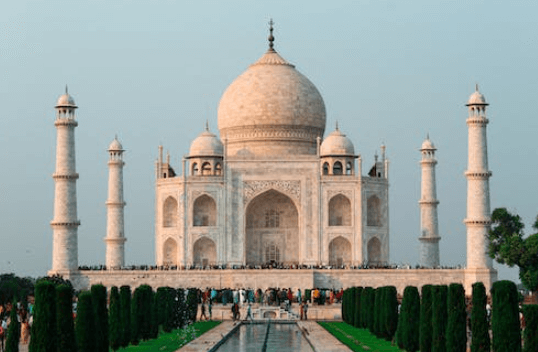
This mausoleum complex is among Agraworld’s most iconic monuments and monuments worldwide. It is perhaps the finest example of Mughal architecture, making it on the list of the new Seven Wonders of the World.
It was built by Emperor Shah Jahan (reigned 1628-58) in memory of his wife Mumtaz Mahal (“the chosen one of the palace”), who died in 1631 while giving birth to their 14th child. It took about 22 years and 20,000 workers to build the four smaller domes surrounding the majestic central dome.
Four smaller domes surround the magnificent central dome. According to some reports, Shah Jahan wanted his mausoleum made of black marble. However, he was dismissed by one of his sons before the work could begin.
How many of the original Seven Wonders still exist?
The Great Pyramid of Giza is the only ancient wonder still alive today. The remaining six are lost or in ruins. Although minced existing I exist impressive ancient landmarks exist, there are Seven ancient wonders of the World. Seven was significant to the ancient Greeks because they believed it symbolized perfection.
What are the new seven wonders?
In 2000, a campaign was launched to determine the Seven Wonders of the World. Over 100 million people voted to reduce over 200 positions to just 7. Then, in 2017, a new modern list of the Seven Wonders of the World was completed, including landmarks that still exist today.
